Click to view our Accessibility Statement or contact us with accessibility-related questions






Do I Need to Lube My Keyboard Switches?

search
close
Sort by: Newest
keyboard_arrow_downAurian
0
May 15, 2024
I don't think I've ever had a scenario where lubing a switch would functionally extend the life of that switch, which is I think the question people are trying to ask but this article does not answer:
Does Lubing a Keyboard Switch Increase the Life of that Keyboard Switch?
No: There's a finite amount of force that can be applied to any given switch through direct friction, and there's a finite range of motion that be activated upon each switch to generate indirect friction. As 99%+ of the switch's operation will be within that limited range of motion the amount of measurable damage induced by friction will fall outside the life span of other material components such as metal springs. Or in other words, you are more likely to wear out the springs of a keyboard switch long before you'll induce friction based damage that a lube would prevent. Maybe: Cheaper switches are likely to contain ingress points for debris such as dust or cat hair. Many quote/unquote Box switches are largely resistant to water and dust ingress, but these generally cost more per switch. Also, not all Box-style switches are designed with an enclosed box, such as JWICK's Ginger Milk Linear switches. Just because you bought a box style switch does not mean it will be resistant to debris ingress. If you live or work in an environment where debris ingress is a concern, then lubing a switch may help extend the switch's life due to damage caused by debris ingress. However, there is a caveat here that if you DO live or work in an environment where debris ingress is a problem, do keep in mind that cleaning debris OUT of a keyboard switch may be difficult or impractical. While you certainly can lube a switch that has suffered damage due to debris, lubing the switch does not remove the debris that caused the damage, nor does it prevent additional debris from damaging the switch. So, sure, you CAN lube that switch filled with cat-hair or sawdust... but if you are applying lube just to extend the life of a switch... I find myself needing to point out that you would be wasting labor better spent on just buying new switches and replacing the damaged switches. Hopefully this is a more practical answer to anybody searching Drop.com for answers on whether or not they need a lubed switch.
No: There's a finite amount of force that can be applied to any given switch through direct friction, and there's a finite range of motion that be activated upon each switch to generate indirect friction. As 99%+ of the switch's operation will be within that limited range of motion the amount of measurable damage induced by friction will fall outside the life span of other material components such as metal springs. Or in other words, you are more likely to wear out the springs of a keyboard switch long before you'll induce friction based damage that a lube would prevent. Maybe: Cheaper switches are likely to contain ingress points for debris such as dust or cat hair. Many quote/unquote Box switches are largely resistant to water and dust ingress, but these generally cost more per switch. Also, not all Box-style switches are designed with an enclosed box, such as JWICK's Ginger Milk Linear switches. Just because you bought a box style switch does not mean it will be resistant to debris ingress. If you live or work in an environment where debris ingress is a concern, then lubing a switch may help extend the switch's life due to damage caused by debris ingress. However, there is a caveat here that if you DO live or work in an environment where debris ingress is a problem, do keep in mind that cleaning debris OUT of a keyboard switch may be difficult or impractical. While you certainly can lube a switch that has suffered damage due to debris, lubing the switch does not remove the debris that caused the damage, nor does it prevent additional debris from damaging the switch. So, sure, you CAN lube that switch filled with cat-hair or sawdust... but if you are applying lube just to extend the life of a switch... I find myself needing to point out that you would be wasting labor better spent on just buying new switches and replacing the damaged switches. Hopefully this is a more practical answer to anybody searching Drop.com for answers on whether or not they need a lubed switch.
PRODUCTS YOU MAY LIKE
Trending Posts in Mechanical Keyboards

RealRage_TV
software?
Hi I'm new to Drop and i just received my Keyboard i have been waiting for months for by Drop x MTN Dew x Borderlands movie and didn't know if there was a software like Logitech's for the keyboards. if anyone could help please let me know
Nov 20, 2024

jdsvdropper
Drop ENTER keyboard with DCX Sleeper Mac variants and Rocky Bird
Black Drop ENTER keyboard with DCX Sleeper Mac variants for the Option and Command keys, and Rocky Bird red and black DCX keycaps.
Nov 19, 2024
AngryTank
Favorite Artisans
COME FORTH SHENRON!
Purple, Dragon Balls, and Seta! What more does a simple man need?
Nov 17, 2024
InsufferablePedant
ZealPC Aqua Zilents
Please ignore the filthy keyboard, it's been on a shelf for a minute.
Nov 15, 2024

Neekolas714
Kicks & Keebs
Alpha Bravo Smoke
Finally finished my Keychron V5. Smooth, beautiful and stylish. What else could there be?
Nov 13, 2024

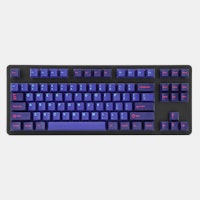
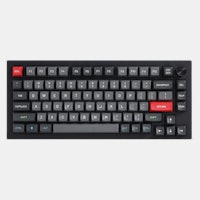
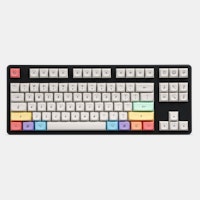
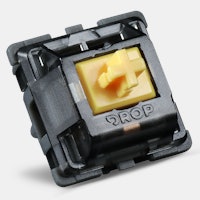

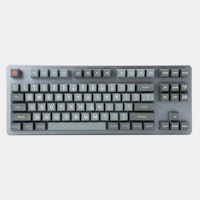
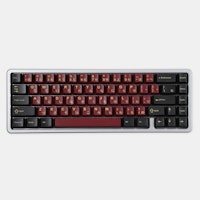
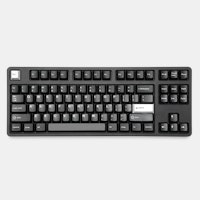









Regardless of what it is that you are seeking out from the switches for your keyboard build, you should always keep in mind how much lube, if any, is present in the switches that you are buying for a build. Given that building a keyboard is an entirely preference-based process, you can choose to modify or add lube to your switches regardless of if they were lubed already or not. There is no wrong answer in that regard. However, knowing if you want switches of a certain type, don’t want to do extraneous amounts of work, or want to sink deeper into the ‘do it yourself’ end of the hobby all can very much help influence your decision on what switches to purchase in the first place. Hopefully this all helps point you in the right direction! If you’re looking for some other pointers, consider checking out my article ‘Switch Marketing Terms: What to Know and What to Ignore’.